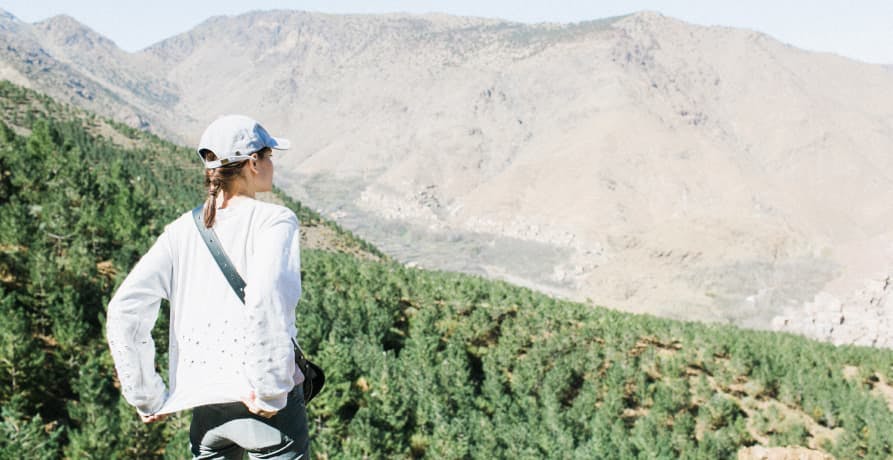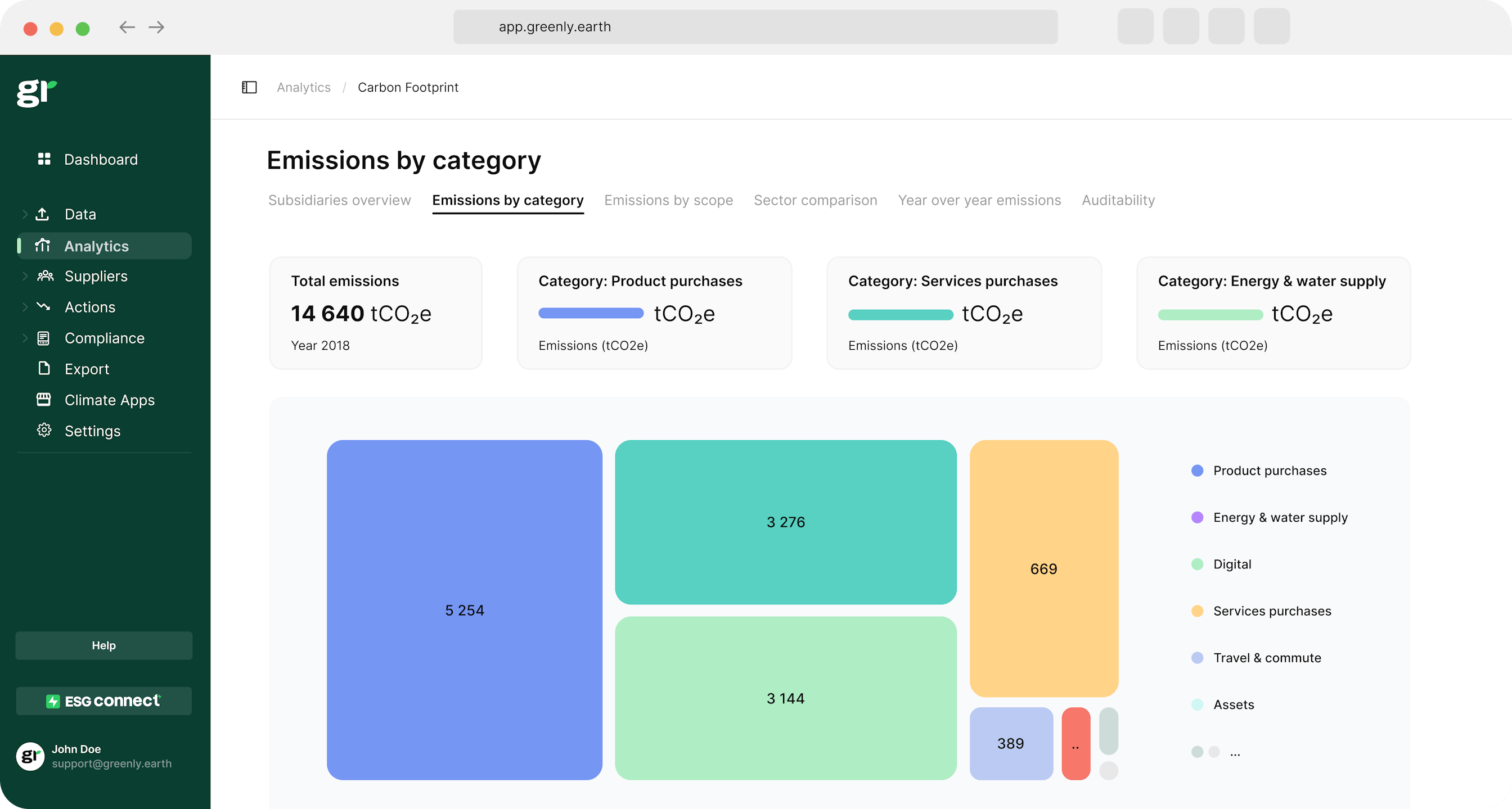ESG / CSR
Industries
What is The Albedo Effect And How Does it Impact Global Warming?



The albedo effect, a key concept in climate discussions, manifests in diverse forms such as surface, planetary, and spectral albedo. It's essentially about how well the Earth reflects sunlight, a trait that varies dramatically across different surfaces.
High-albedo surfaces like ice are great reflectors, sending most sunlight back into space, while low-albedo surfaces like oceans absorb more solar energy. This interplay between reflection and absorption significantly shapes global temperatures and feeds into complex feedback loops within our climate system, playing a vital role in the mechanics of climate change and global warming.
👉 In this article we’ll examine the albedo effect and its role in global climate change.
What is the albedo effect?
In simple terms, the albedo effect is about how well different surfaces can reflect the sunlight back out into space (referred to as planetary albedo). Surfaces with light colors, categorized as having high albedo, are adept at reflecting a large portion of sunlight, while dark-colored surfaces, known as low albedo, absorb more incoming solar radiation.
💡 This phenomenon is also referred to as incident radiation, as the volume of electromagnetic waves bouncing off lighter-colored surfaces is larger than those with dark tones.
The concept of the albedo effect isn't just theoretical; it has practical implications in everyday life. Consider the scenario of two cars parked under the sun, one black and the other white.
The interior of the black car, due to its low-albedo surface, absorbs more sunlight, leading to a significantly warmer interior compared to the white car.
The white car's high-albedo surface reflects most of the sunlight, keeping its interior comparatively cooler.
👉 This everyday example underscores the albedo effect's role in determining how different surfaces respond to solar energy, mirroring a much larger dynamic at play in our planet's climate system.
What impact does the albedo effect have on the climate?
The albedo effect is more than a measure of reflection; it's a climate influencer. The principle is straightforward: the higher a surface's albedo, meaning the more light it reflects, the cooler the surrounding air tends to be. Conversely, surfaces with low albedo, absorbing more sunlight, warm up the adjacent air more. This variation in albedo across different surfaces directly impacts local temperatures, making it a key player in the broader climate dynamics.
When considering the planet as a whole, the combined albedo of all surfaces yields a global average. Historically, a stable global albedo has been indicative of a stable global climate. This delicate balance is critical: a shift in either global climate or albedo can influence the other. Importantly, this interplay can lead to feedback loops - a topic we'll delve into later.
💡 Think about the Earth's diverse landscapes and their varying abilities to reflect sunlight. The differences are striking: surfaces with high albedos, like the vast polar ice caps, bounce back most of the sunlight, while those with low albedos, such as dense, dark forests and deep oceans, absorb more solar energy.
This variety in surface albedo is a critical factor in shaping our planet's climate. From the reflective ice at the poles to the sun-absorbing expanses of land and sea, each contributes uniquely to the global climate puzzle.
👉 In fact, studies have shown that there is ice albedo feedback in the Arctic Ocean – which can contribute to shifting ice and melting snow covered areas. This an example of higher albedo value, as lighter areas such as fresh snow are more susceptible to a high fraction of incoming radiation.

How is the albedo effect measured?
Remote sensing techniques
The measurement of albedo relies on advanced remote sensing technology. Using specialized equipment mounted on planes or satellites, scientists direct light toward Earth's surface and then measure the intensity of light that is reflected back, determining the albedo differences of various surfaces and environments.
Understanding the albedo scale
Albedo values are quantified on a scale ranging from 0 to 1. A value of 0 represents a surface that absorbs all incoming light and reflects none, such as a perfectly dark surface. On the other hand, a value of 1 indicates complete reflectivity, where a surface reflects all incoming light, akin to a perfect mirror.
Global albedo average
The average albedo of the Earth is approximately 0.3. This means that around 30% of the sun's energy hitting the planet's surface is reflected back into space, while about 70% is absorbed. This balance between reflection and absorption plays a significant role in regulating the Earth's temperature and climate system.
The albedo effect: water and ice in the climate equation
The albedo of water and ice plays an important role when it comes to climate change, especially the polar ice caps. The albedo of open ocean water is relatively low at about 0.06, meaning it absorbs a lot of sunlight, which contributes to ocean warming.
In contrast, sea ice has a variable albedo; large bright surfaces like ice or ice sheets have a higher albedo of up to 0.7, significantly reflecting sunlight and helping to keep the poles cool. However, when sea ice melts or forms dark ponds, its albedo drops to around 0.1, absorbing more heat and exacerbating the warming process.
👉 This change in albedo at the poles is crucial, as it not only affects local temperatures but also has far-reaching impacts on global climate patterns.
Albedo of Different Surfaces
In comparison, other surfaces demonstrate a wide range of albedo values:
- Forests have an albedo of approximately 0.15
- Grasslands are slightly more reflective with an albedo of 0.25
- Desert sands, with their lighter color, have an albedo of 0.4
- Ocean surface ice, vital in regulating polar temperatures, reflects about 60% of sunlight with an albedo of 0.6
- Fresh snow, highly reflective, has an albedo of 0.8
- Aged snow, slightly less reflective, holds an albedo of 0.7
Climate Change Implications
The wide range of albedo values across various landscapes highlights the complexity of the Earth's climate system. They showcase how shifts in surface types, from melting polar ice to changing vegetation cover, can influence the Earth's surface albedo and, as a result, affect global temperature and climate dynamics. This understanding is essential for predicting and mitigating the impacts of climate change.

The effects of high albedo
Snow and ice - nature's reflectors
Snow and ice are classic examples of surfaces with high albedo. Have you ever noticed how bright it feels outside after a fresh snowfall on a sunny day? That's the land surface albedo effect in action. The high reflectivity of snow bounces a lot of sunlight into your eyes, making everything appear brighter, especially compared to overcast conditions.
Snow vs. grass or pavement
On days without snow, surfaces like grass or pavement, which have lower albedo, don't reflect as much light. This contrast in brightness between snow-covered and non-snow-covered surfaces is a direct result of their differing albedo levels. Lighter colored surfaces, like ice and snow, reflect more electromagnetic radiation (or sunlight), particularly evident in snow-capped regions like the Arctic. In these areas, the high albedo plays a crucial role in preventing the absorption of solar radiation, thus protecting the ice from melting.
Polar regions
The North and South Poles are prime examples of high albedo due to their extensive coverage of snow and ice. These massive icy landscapes are critical for Earth's climate stability. They act as Earth's natural reflectors, maintaining global temperatures by reflecting a significant portion of solar radiation. Both the Arctic and Antarctic, with their sea ice and glaciers, serve as key high albedo areas, illustrating the importance of these regions in the global climate system.
Wider impacts of albedo in various regions
Beyond the polar areas, other regions with sea ice and glaciers also contribute significantly to the Earth's high albedo. These include the expansive mountain glaciers in the Himalayas, Rockies, Andes, and Alps, the extensive Patagonian Ice Fields in South America, and the substantial Greenland Ice Sheet.
Seasonally snow-covered areas in parts of Canada, Russia, and northern China, as well as the glaciers and snowfields of New Zealand's Southern Alps, also play a role. Although these places might be remote, they are essential in the Earth's energy balance, reflecting substantial amounts of solar radiation.

The effects of low albedo
Low albedo surfaces
The open ocean is a prime example of a surface with low albedo, absorbing most of the sunlight it receives. Similarly, grass and bare soil also have lower albedo compared to highly reflective surfaces like snow. The surfaces play a significant role in absorbing solar radiation, contributing to the Earth's heat balance.
As global warming intensifies, its effects on the albedo of our planet become increasingly evident. The melting of sea ice and glaciers, driven by rising temperatures, alters the surface of the Earth leading to a decrease in the Earth's overall albedo.
This reduction in high albedo surfaces is compounded by changes in precipitation patterns; more snowfall is replaced by rain, resulting in less snow cover. This decline in snow and ice cover means that more solar radiation is absorbed, rather than reflected, further exacerbating global warming.
Comparison of High and Low Albedo
| Aspect | High Albedo | Low Albedo |
|---|---|---|
| Definition | High albedo surfaces reflect a large percentage of incoming solar radiation. | Low albedo surfaces absorb most of the incoming solar radiation. |
| Surface Examples | Snow, ice, sandy deserts, and light-colored roofs. | Oceans, forests, asphalt roads, and dark-colored roofs. |
| Impact on Temperature | Results in cooler surface temperatures because more sunlight is reflected. | Results in warmer surface temperatures because more sunlight is absorbed. |
| Climate Influence | Helps to cool the Earth and mitigate global warming. | Contributes to warming the Earth, enhancing global warming effects. |
| Energy Absorption | Low energy absorption, high reflection. | High energy absorption, low reflection. |
| Examples of High Albedo Effect | Polar ice caps, glaciers. | - |
| Examples of Low Albedo Effect | - | Urban heat islands, deforested areas. |

The impact of clouds on albedo
Clouds, with their high albedo, have substantial influence over atmospheric temperatures and play an important role in the Earth's albedo dynamics.
On a clear, sunny day, surfaces like beach sand can become scorching hot, demonstrating how direct sunlight significantly heats the Earth's surface temperature (sometimes referred to as blue sky albedo).
Conversely, on cloudy days, these surfaces tend to be cooler due to the reflective properties of clouds. Clouds act as a barrier, reflecting some of the sun's radiation back into space and thereby reducing the amount of heat absorbed by the ground.
Clouds and the greenhouse effect
While clouds block and reflect some solar radiation, they don't block it all – which is why it's still possible to get a sunburn on a cloudy day. The albedo effect means that some sunlight reaching the ground is absorbed and some is reflected. However, in the presence of thick, high-altitude clouds, they can prevent much of this reflected sunlight from escaping back into space. This trapped heat, much like a blanket, contributes to the greenhouse effect, warming the Earth's surface and lower atmosphere.

Deforestation and its albedo implications
Forests typically have a low albedo, absorbing a significant amount of sunlight. This absorption is in line with the role of plants in capturing solar energy for photosynthesis.
👉 However, forests, especially in tropical regions, counterbalance their low albedo with the cooling effect of evaporation. They cool the atmosphere and increase rainfall, which in turn boosts cloud albedo.
The complex impact of deforestation
When forests are cleared, the immediate effect is an increase in surface albedo due to the exposure of underlying land or grasses, which results in a change to the Earth's land surface, reflecting more sunlight than the dense tree canopy.
However, this increased reflection does not compensate for the lost benefits provided by forests. The cooling effect of evaporative processes is reduced, and there's a decrease in cloud formation, leading to lower cloud albedo.
Furthermore, deforestation releases stored carbon into the atmosphere, exacerbating global warming. This complex interplay between deforestation, albedo, and climate dynamics highlights the intricate balance within Earth's climate system.

The albedo feedback loop and its role in global warming
The dwindling albedo and global warming
The Earth's albedo has been gradually decreasing over recent decades, a trend contributing significantly to global warming.
💡 Since the 1980s, the average albedo in the Arctic, for instance, has decreased by about 1.25 to 1.51% per decade. While this might appear minor, even slight changes in albedo can substantially impact global temperatures.
Understanding the feedback loop
This reduction in albedo can be attributed partly to the long-term increase in Earth's average surface temperatures, known as global warming. Caused mainly by human-induced emissions of greenhouse gases, global warming reduces albedo, which in turn leads to further warming. This creates a feedback loop, a vicious cycle accelerating the rate of climate change.
The arctic example
The Arctic is a clear example of this phenomenon. As global warming leads to the melting of sea ice and a decrease in average seasonal snowfall, the region's albedo drops. A lower albedo means more solar energy is absorbed, leading to warmer climates and perpetuating the cycle of ice melt and albedo reduction.
👉 This positive feedback loop poses a significant challenge in curbing global warming, as each factor intensifies the other.
Global cooling: The other side of the albedo effect
Interestingly, this feedback loop can also work in reverse, as demonstrated by past ice ages. During such periods, a cooler Earth led to increased sea ice formation and snowfall, the result is that the Earth's albedo increased, reducing the amount of sunlight absorbed by the surface. As a result, global temperatures continued to plummet, ushering in an ice age.
This illustrates the dual nature of the albedo effect and global warming feedback loop, capable of both heating and cooling the planet under different circumstances.
The significance of the albedo effect in climate science
The albedo effect is a crucial tool in understanding the complexities of global warming. While it represents only one of the many variables affecting climate change, monitoring changes in Earth's albedo over time is important.
👉 This tracking provides insight into the balance between how much heat our planet reflects back into space and how much it absorbs. Such information is critical for refining prediction models that forecast future temperature changes and overall climate trends.

Assessing the albedo effect
Labeling the albedo effect as inherently "good" or "bad" oversimplifies its role in our climate system. Much like greenhouse gases, the albedo effect is a natural component of Earth's climate. Without it, the planet's climate would be drastically different and potentially unable to support life as we know it.
The albedo effect contributes optimally to Earth's climate stability when it remains relatively constant. Significant shifts in either direction - an increase or a decrease in albedo - can lead to drastic changes in temperatures on a global scale.
Consequences of albedo fluctuations
- Increased albedo - A global increase in albedo would reflect more solar radiation back into space, potentially stabilizing or even cooling the Earth's temperature. However, an excessive increase could lead to significant cooling, akin to initiating a cooling phase or an ice age. These scenarios, while theoretically possible, are currently unlikely due to the prevailing trend of global warming.
- Decreased albedo - The ongoing decrease in global albedo, as observed over the past decades, is concerning. A lower albedo means that the Earth absorbs more solar radiation, thereby contributing to the acceleration of global warming and intensifying the climate crisis. This trend aligns with the positive feedback loop where warming leads to further decreases in albedo, which in turn exacerbates warming.
What can be done to stabilize the Earth’s albedo?
The link between albedo and global temperatures means that effectively combating climate change is crucial to reversing the current trend of decreasing global albedo. Stabilizing Earth's temperatures can halt the reduction in albedo, creating a more balanced climate system. This can be achieved through concerted efforts to reduce greenhouse gas emissions, transition to renewable energy sources, and implement sustainable practices globally.
In addition to addressing the root causes of climate change, there are direct methods to potentially increase the Earth's albedo:
- Urban albedo modification - Implementing reflective materials in urban infrastructure, such as rooftops and roads, can increase the albedo of densely populated areas. Using lighter-colored, high-albedo materials can reflect more sunlight back into space.
- Reforestation and afforestation - Planting trees in areas that have been deforested or lack vegetation can indirectly contribute to albedo regulation by influencing cloud formation and regional climate patterns.
- Agricultural practice - Certain agricultural methods, like leaving fields covered in lighter stubble post-harvest, can temporarily increase land albedo.
- Geoengineering solutions - This involves large-scale interventions like marine cloud brightening or stratospheric aerosol injection, designed to reflect more sunlight away from the Earth. However, these approaches are still experimental and come with significant uncertainties and potential risks.
Preservation of high albedo surfaces
Conserving and protecting natural high albedo surfaces like polar ice caps, glaciers, and snowfields is also essential. This includes minimizing activities that contribute to ice melt, such as reducing carbon emissions and avoiding ecological disruptions in sensitive polar regions.
What about Greenly?
At Greenly we can help you to assess your company’s carbon footprint, and then give you the tools you need to cut down on emissions. Why not request a free demo with one of our experts - no obligation or commitment required.
If reading this article has inspired you to consider your company’s own carbon footprint, Greenly can help. Learn more about Greenly’s carbon management platform here.





